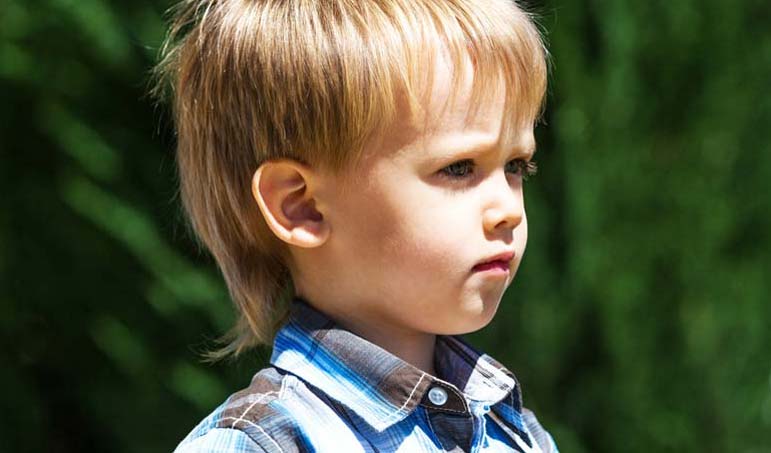
The boy's eyes averted my gaze as he walked into my office. I knew that something was amiss. He spoke of his mother and his concern for her. He did not know what would happen.
Children often do not know why they are anxious; they just know that they are experiencing discomfort. We may notice what is happening before they are able to express their feelings verbally. The following actions give us a clue:
• Asking what-if questions
• Doing repetitive preparations
• Needing objects for security, either to hold or hide behind
• Stuttering or mumbling
• Dropping things, tripping, or falling
• Looking down to avoid eye contact, or looking elsewhere, as if wary of danger
• Shoulders slumped forward
Anxious feelings are based on doubt and fear. When we are filled with fear, our body systems try to protect our delicate organs. Our extremities become cold. We are drained of energy, and we move differently than when we are strong and confident.
As adults, we have a profound effect on the children in our world. When they are anxious, there are many things we can do to help calm their minds and hearts. Here are ten solutions:
1. Get down on the child's level
Our proximity alone provides the child with a sense of importance. When we are close to them and look them in the eye, we let them know that whatever is troubling them is important to us.
2. Talk softly and slowly
The tone of our voice, its cadence and rhythm will either escalate the child's anxiety or provide a calming influence. Talking softly allows us to be on more intimate terms with the child. Speaking slowly soothes jittery nerves and slows the heart rate.
3. Listen actively
Once we are close and personal with the child, they will feel comfortable sharing their innermost feelings. We nod and comment to let the child know we are hearing what is being said. Our undivided attention encourages open dialogue and allows the ready sharing of thoughts and feelings.
4. Reflect what is being said
Reflecting back to the child what we hear they are saying or feeling gives them words to identify fears and verbalize discomfort. We add understanding to the situation and help the child work through it more effectively.
5. Give physical affection, if and when appropriate
Our soft touch will provide feelings of comfort and help them to relax. Note that this is only appropriate if we have a relationship of trust with the child and are a close relative or friend.
6. Provide reassurance
Words that provide reassurance include, but are not limited to the following phrases: "Things will be all right," "I am sure that you will find out soon," "It's okay
to be afraid," and "You are important to me. I will stay with you while we work this out."
7. Breathe deeply together
Deep breathing allows the body to relax and alleviates anxious feelings. When we breathe deeply with the child, we are teaching them a calming technique and giving them a pattern to follow when they are alone.
8. Pray together
Prayer activates our faith and dispels doubt and fear. Praying with an anxious child gives them the confidence to approach the Divine on their own when they are having difficulty.
9. Make preparations for future events
Preparing provides concrete action that calms anxious feelings. It gives us something to do while we are waiting for an event to happen, especially when we do not know what the outcome will be.
10. Check in with the child after the event
Our presence after a difficult event gives the child a chance to process what happened and transfer positive memories for long-term storage and later retrieval. When we let them know that they continue to be important to us we increase their feelings of confidence and worth.
As I listened to the boy talk about his mother, I reflected back to him his love and concern for her. We did some deep breathing together, and he left my office reassured that things would work out, and that he could come to me as needed to discuss his feelings.
These ten ways not only calm an anxious child, but they give the most important gift that we as adults have to give, our unconditional love. Like a gentle spring rain, we provide life giving nourishment that has a profound effect on the children in our world. We know that we have succeeded when we see them providing the same service to their peers!
Denise W. Anderson is a published author with an Education Specialist Degree in School Psychology.


 Contact The Editor
Contact The Editor
 Articles By This Author
Articles By This Author